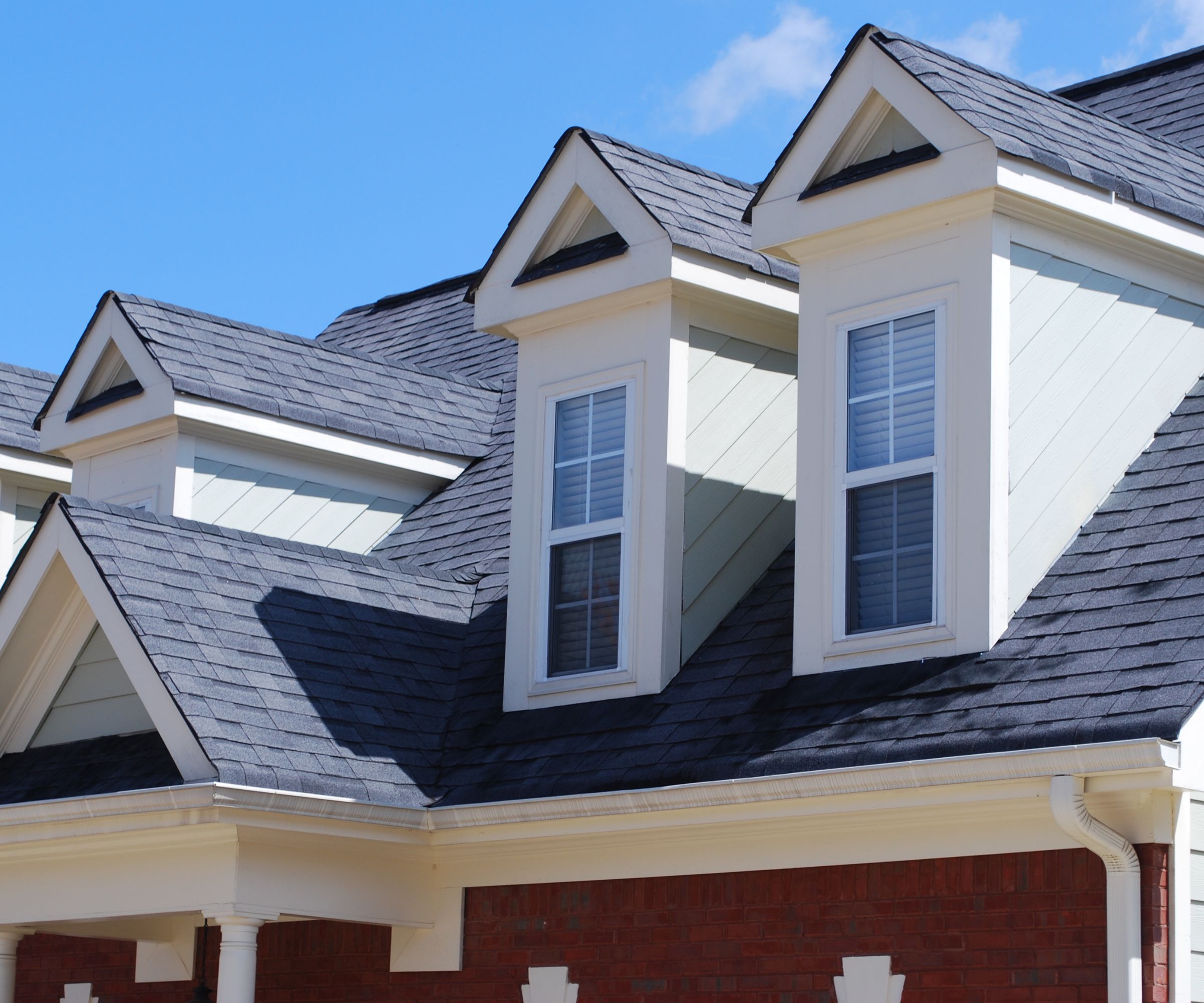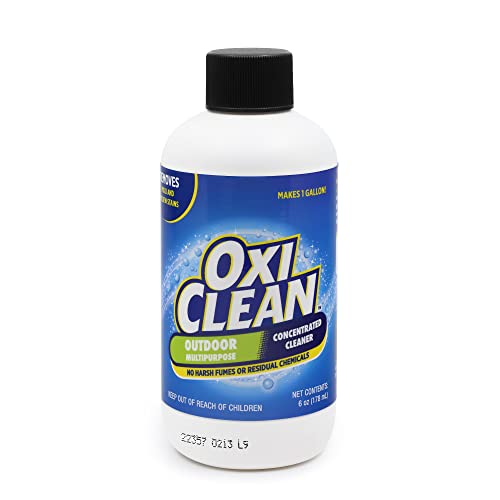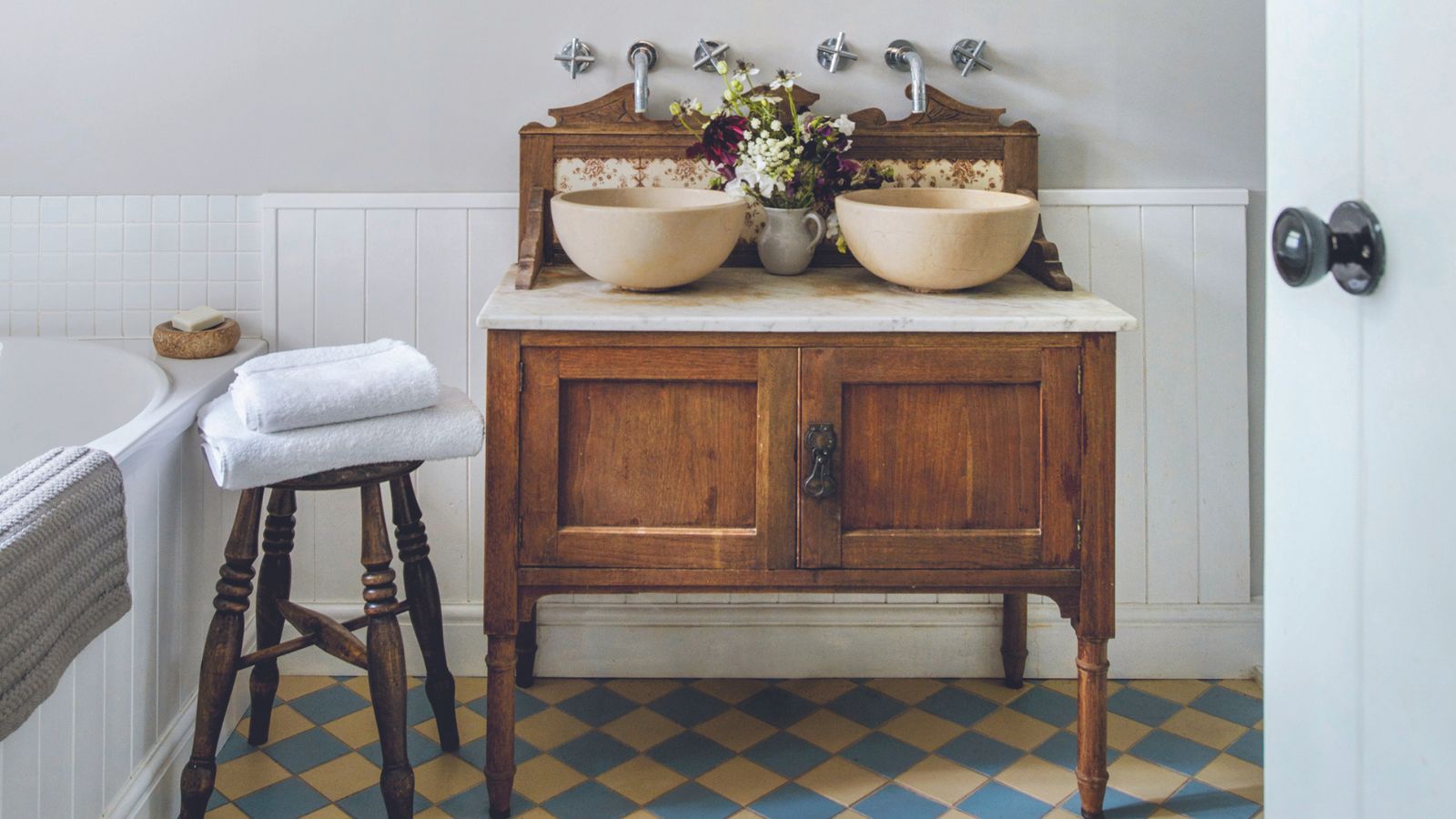How to clean a shingle roof the right way – professionals tips for a stain-free finish
Revitalize the exterior of your home by cleaning a shingle roof


Dirt, moss, and mildew can compromise the appearance of your home’s exterior over time – and some growths can cause damage. However, it is possible to clean a shingle roof and restore curb appeal.
Asphalt shingles are a popular roofing material, but even a new roof can eventually gather moss, marks, and more as time passes. Cleaning is the remedy, though, and a task that should be on your agenda.
We asked the experts to share their methods for effectively cleaning a shingle roof while staying safe.
How to clean a shingle roof
Cleaning a shingle roof brings benefits. ‘The main reason is to extend the lifespan of the roof by preventing moss, algae, and lichen growth,’ says Jon Sabo, the Founder of Mighty Dog Roofing.
‘These organisms can hold moisture against your roof’s surface, causing the shingles to deteriorate prematurely and potentially leading to rot and leaks. Leaves, dirt, and other debris can also accumulate on your roof, trapping moisture and creating an environment conducive to moss and algae growth.’
Before setting about the job of cleaning a shingle roof, just as when removing moss on a roof, assuring your safety is key, and we’ve put together what you need to know below.
Remember, though, that if you’re not confident about working at height, you should call in a pro instead of DIYing.
Safety advice

To stay safe when working, follow this advice from Jon Sabo.
‘Use a sturdy ladder and non-slip shoes to prevent slipping on wet or mossy surfaces,’ Jon advises. ‘Remember, when you're working on a steep roof, use a safety harness to prevent falls.
‘It’s best to cover plants and landscaping areas with plastic sheeting to protect them from cleaning solutions. Rinse with water thoroughly if your cleaning solution comes in contact with your plants.
‘Wear gloves, safety goggles, and appropriate clothing to protect your skin and eyes from cleaning solutions.
‘Lastly, avoid cleaning the roof in wet, windy, or extremely hot weather.’
Protect plants
Before you clean, consider landscaping. Lay down plastic tarps or sheeting to keep plants safe. Don’t remove these before you’ve finished the job by rinsing the roof as runoff can harm them.
Any patio furniture should also be moved out of the way before you start.
Remove debris
For effective cleaning, the roof surface needs to be clear of what can accumulate there.
‘The process of cleaning a shingle roof starts by removing debris from the roof, including branches, leaves, or anything else collected on the rooftop,’ says Mike O’Brien, owner and operator of exterior remodeling company Custom Exteriors.
‘In our area, during the bi-annual roof inspection, we encourage the removal of debris and trimming any overhanging trees or bushes, as they can create damage during severe weather. When doing this, we collect anything that isn’t organic to dispose of it.
‘Leaves and other organic debris can just be blown off the roof with a leaf blower. This allows you to collect the debris from ground level.’
Gutters need to be clear, too, ready for washing. Be sure to clean gutters from the roof safely.
Treat shingles carefully
When cleaning a shingle roof, proceed with care. ‘The most important part of cleaning your roof is remembering that asphalt shingles are somewhat fragile,’ says Mike O’Brien.
‘Excessive scrubbing, harsh cleaners, and hard bristle brushes can damage your roof more than the stains you are trying to remove. If your cleaning process removes the granules from your shingles, you are taking years off the life of your roof.’
Use a cleaning solution

To clean a shingle roof, it might be sufficient to remove debris, and this can depend on where you live. ‘In our area (Colorado), nine times out of ten, this is sufficient to clean the roof, and no further action is needed,’ says Mike O’Brien. ‘Our dry climate prevents many of the issues that require actual cleaning, like mildew, roof stains, and moss growth. However, we have worked in Louisiana during hurricane season and in areas that do require actual cleaning.’
If your roof does require cleaning because of growths and stains, be sure to use a cleaner appropriate to the type of shingles on your roof as well as the level of growth and staining. Always test any cleaner first in an inconspicuous place. For clay or slate tiles, always use a dish soap solution (see below) or a cleaning product specially designed for them.
For asphalt shingles, there are options. Jon Sabo says, ‘We recommend industrial-grade bleach, which is about 12.5 per cent bleach added to water, however, this is not available in the market. Homeowners who wish to try this on their own can purchase bleach at about 8 per cent concentration and dilute it in water (50:50 mix of bleach and water). It’s effective at killing algae, moss, and other organic growth, plus it’s readily available and inexpensive.’
Note his caution, however. ‘It can damage plants and landscaping if not properly rinsed and may cause skin and eye irritation.

This popular Oxygen Bleach works on pavement, vinyl, aluminium siding, shingle roofing, gutters, and grout without residue. Dilute it with water to achieve different strengths, and use a pressure washer, scrubber, pump sprayer or brush for brilliant results.
‘Sodium percarbonate is a safer and more eco-friendly option for cleaning roof shingles, ideal for DIY enthusiasts,’ he says. ‘Mix four to six ounces of oxygen bleach per gallon of water. It’s less harmful to plants and landscaping but is also less effective than chlorine. It can also be more expensive and harder to find.’
A light dish soap solution is an alternative. ‘It should kill a majority of algae and bacteria growing on the roof,’ says professional roofer and home exterior contract Tyler Hull of Modern Exterior. Note, though, that it ‘will not remove larger grown lichen’.
Specialist roof cleaning products can also be found in home improvement stores, but always check they are suitable for the type of shingles that you have.
Clean carefully
Safeguard the integrity of your roof when you clean. You can use a garden sprayer to apply the cleaning solution.
‘Once you have determined the cleaning agent to be safe for cleaning your roof, use the lowest water pressure and gentlest cleaner that you can and still remove the stains or growth,’ says Mike O’Brien. ‘The most important factor in cleaning a shingle roof is ensuring that you are not creating damage or removing granules with your method.’
Start from the top and work downwards. Allow the cleaning solution to work for around 20 minutes.
Rinse with water if you’ve used a chemical solution using a garden hose at low pressure.
Opted for a dish soap solution? ‘Rinsing afterward can always be a safe bet, but most soaps do not leave a visual residue, so it’s not necessary,’ says Tyler Hull.
Always check gutters and downspouts for any blockages and remove these after cleaning.
To help keep your house sound, be sure to complete the routine maintenance that will prevent gutters clogging. And keep up with tasks such as pruning tree branches and trimming large shrubs if they’re overhanging to protect the roof from damage and debris accumulation.
Sign up to the Homes & Gardens newsletter
Design expertise in your inbox – from inspiring decorating ideas and beautiful celebrity homes to practical gardening advice and shopping round-ups.

Sarah is a freelance journalist and editor. Previously executive editor of Ideal Home, she’s specialized in interiors, property and gardens for over 20 years, and covers interior design, house design, gardens, and cleaning and organizing a home for Homes & Gardens. She’s written for websites, including Houzz, Channel 4’s flagship website, 4Homes, and Future’s T3; national newspapers, including The Guardian; and magazines including Future’s Country Homes & Interiors, Homebuilding & Renovating, Period Living, and Style at Home, as well as House Beautiful, Good Homes, Grand Designs, Homes & Antiques, LandLove and The English Home among others. It’s no big surprise that she likes to put what she writes about into practice, and is a serial house renovator.
-
 I'm 5ft2 and this telescopic scrubber safely and easily banished mold and grime in even the hardest-to-reach areas of my bathroom in less than 15 minutes
I'm 5ft2 and this telescopic scrubber safely and easily banished mold and grime in even the hardest-to-reach areas of my bathroom in less than 15 minutesMy bathroom has never looked better thanks to this handy $16 two-in-one tool from Joseph Joseph
By Ottilie Blackhall Published
-
 Everyone is obsessed with vintage tiles right now – bring the nostalgic charm of this classic design feature into your home with our 5 design ideas
Everyone is obsessed with vintage tiles right now – bring the nostalgic charm of this classic design feature into your home with our 5 design ideasHonor the past with our favorite ways to decorate with vintage tiles, as suggested by interior design experts
By Eleanor Richardson Published